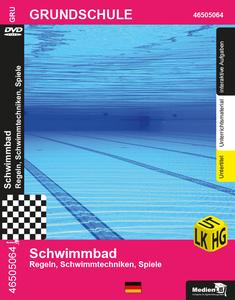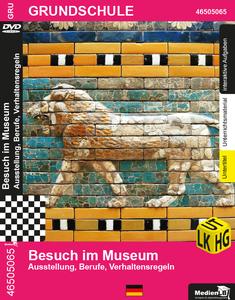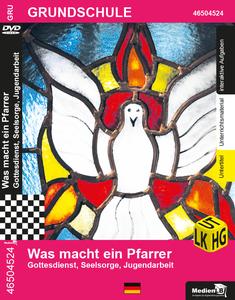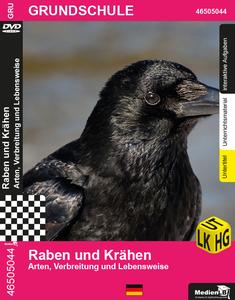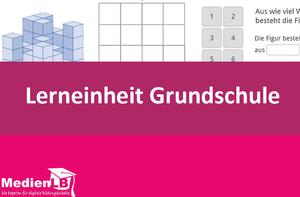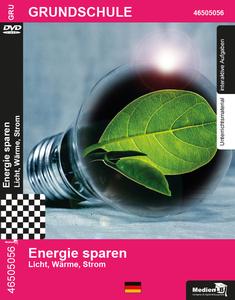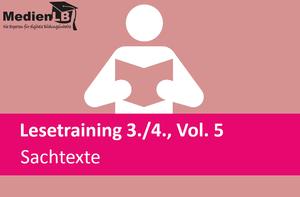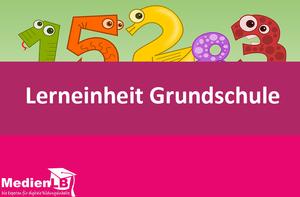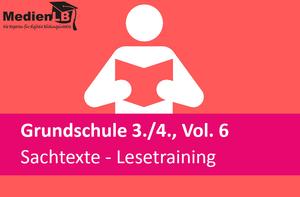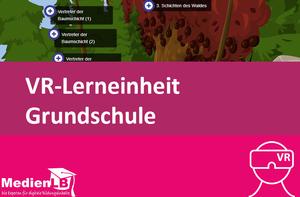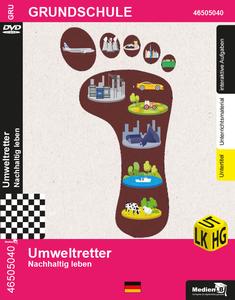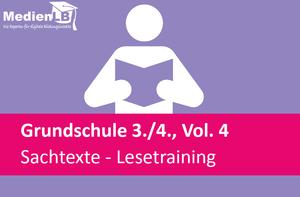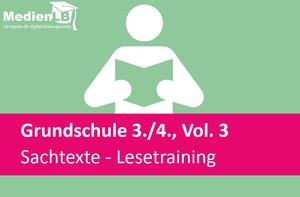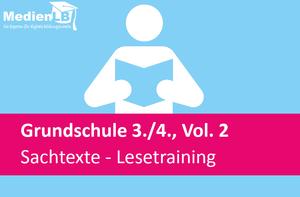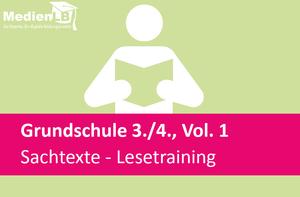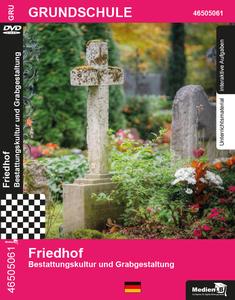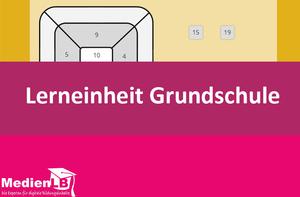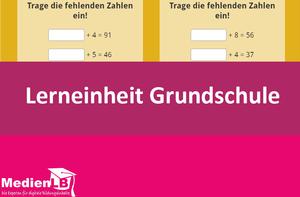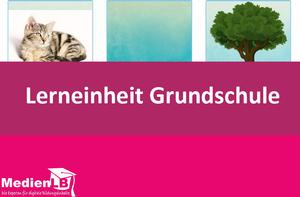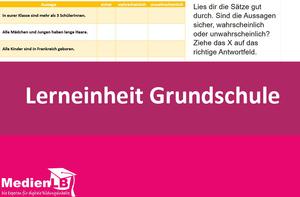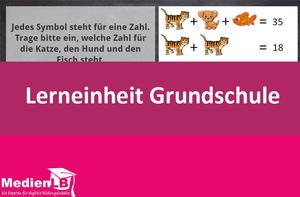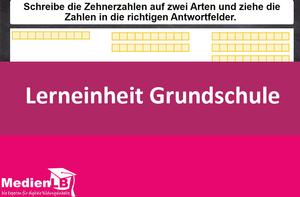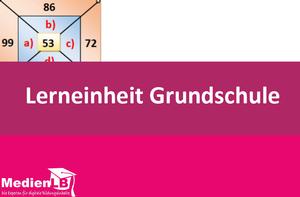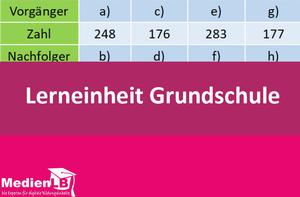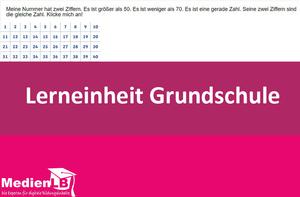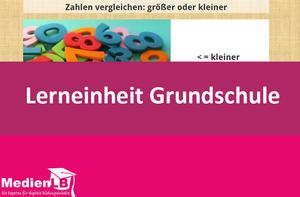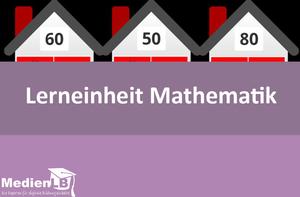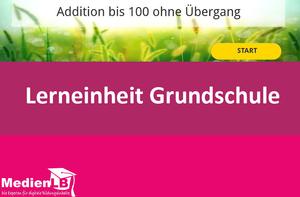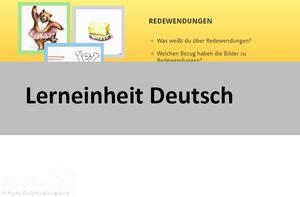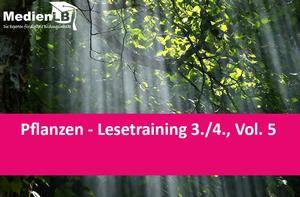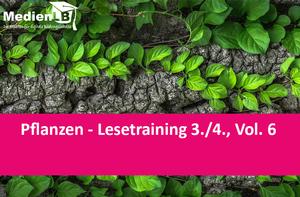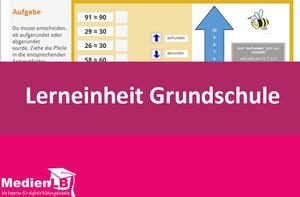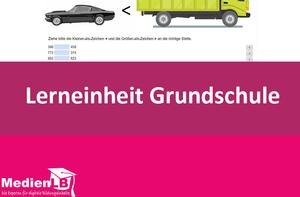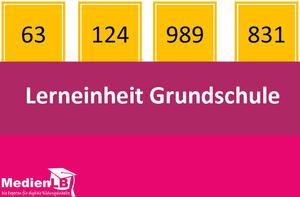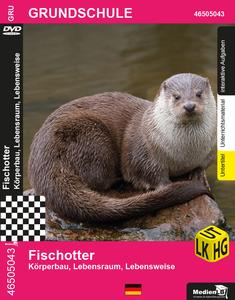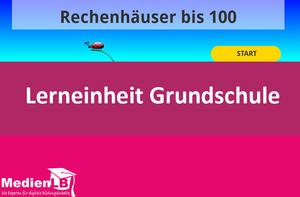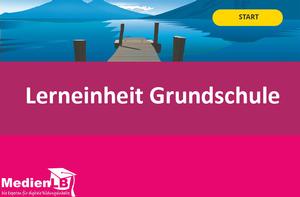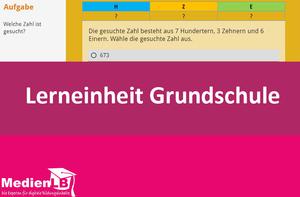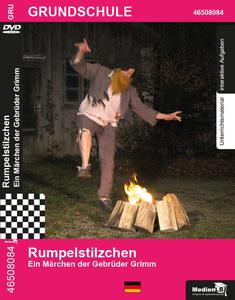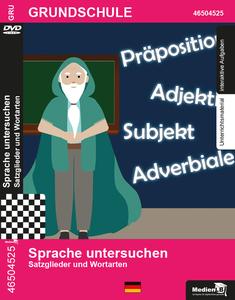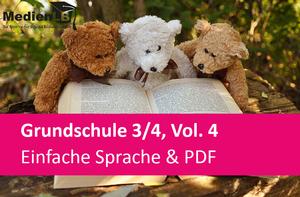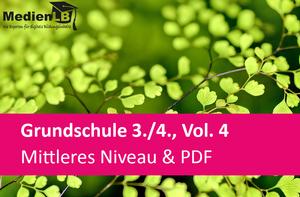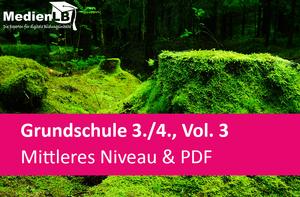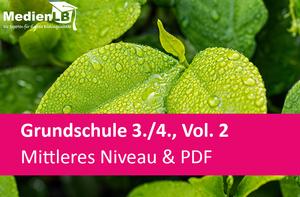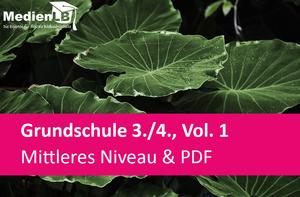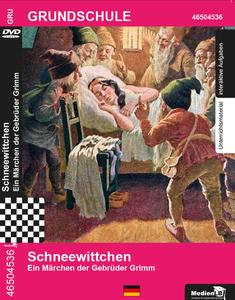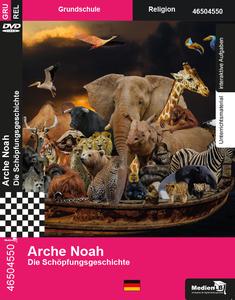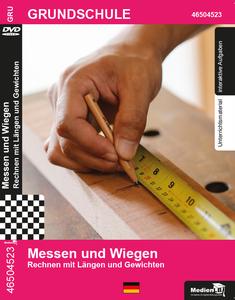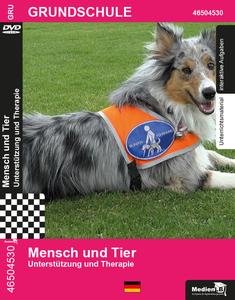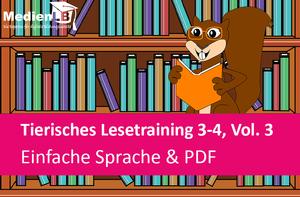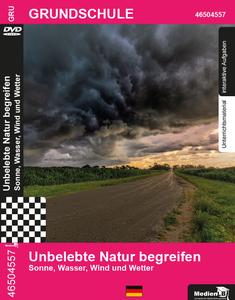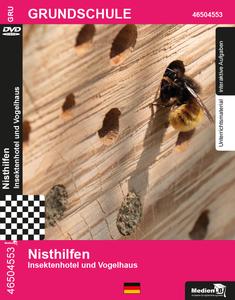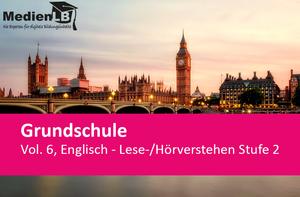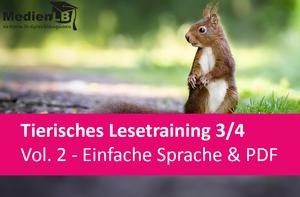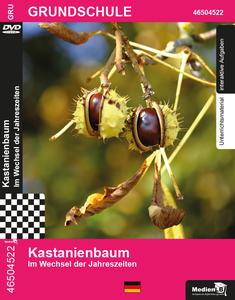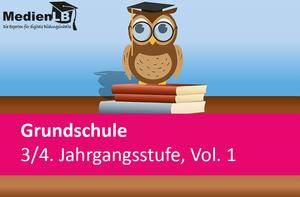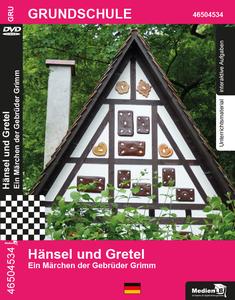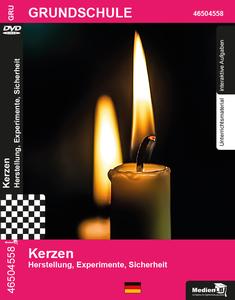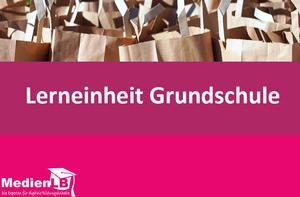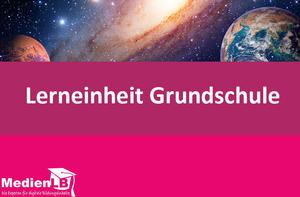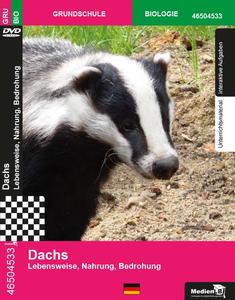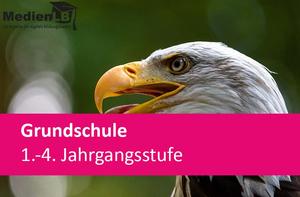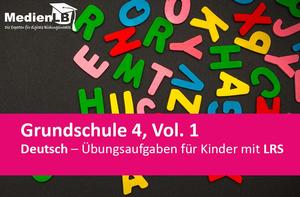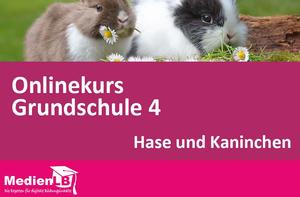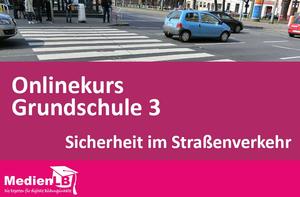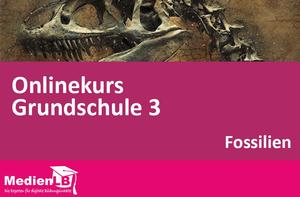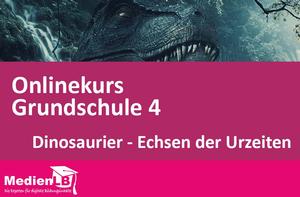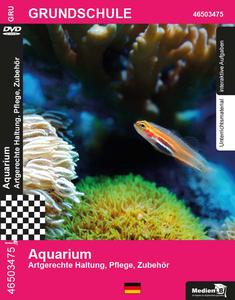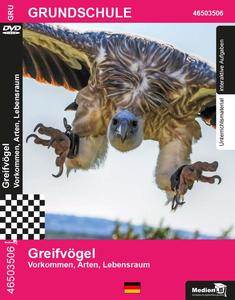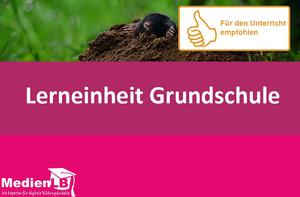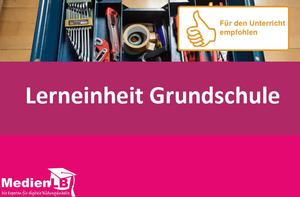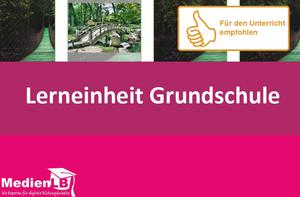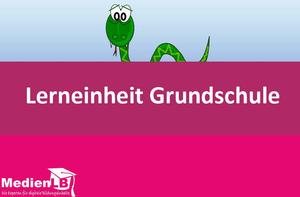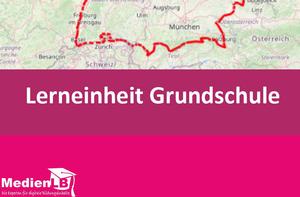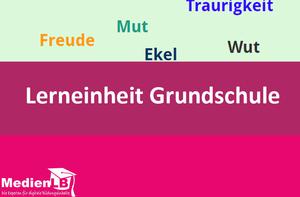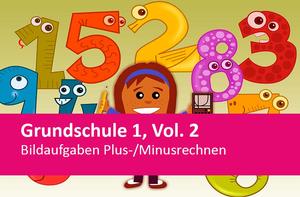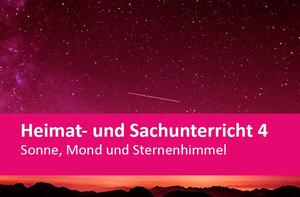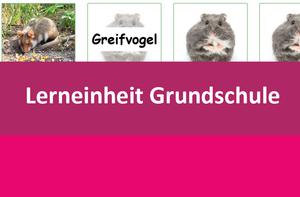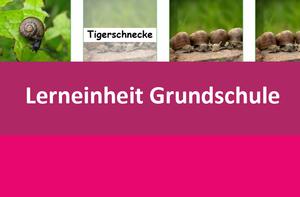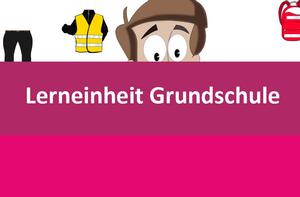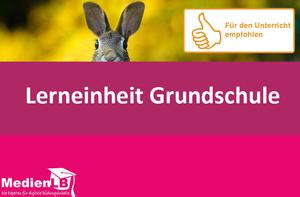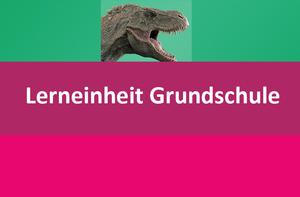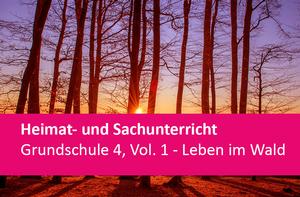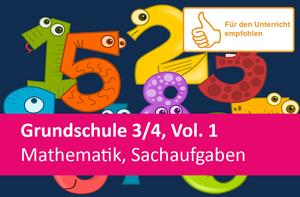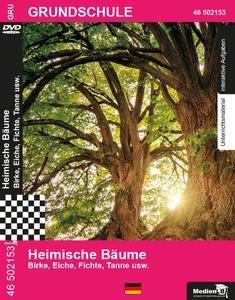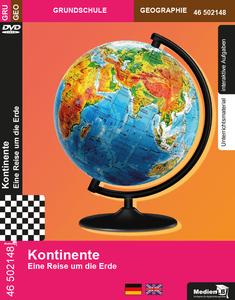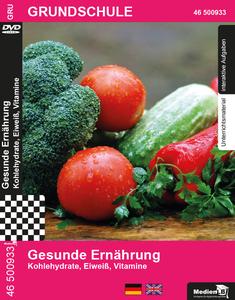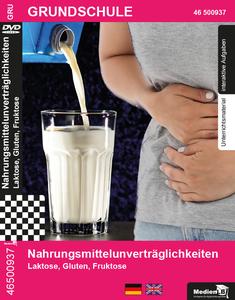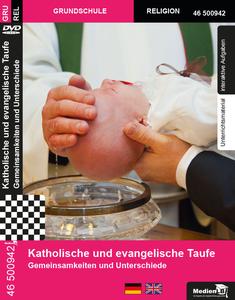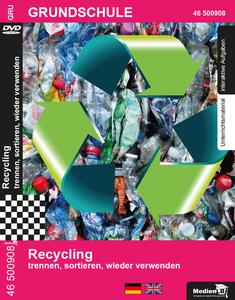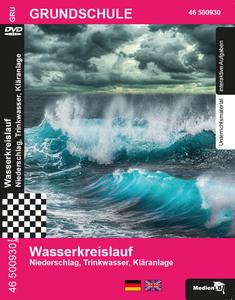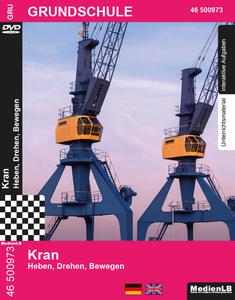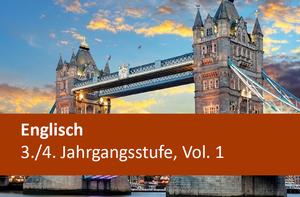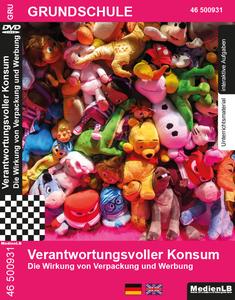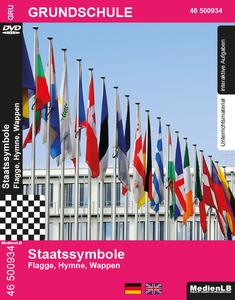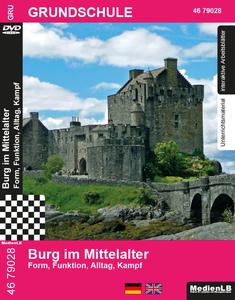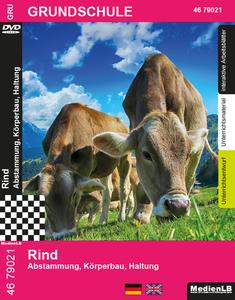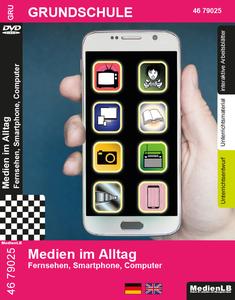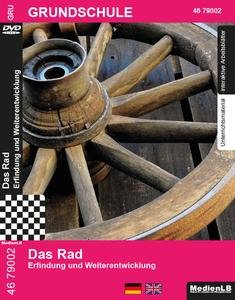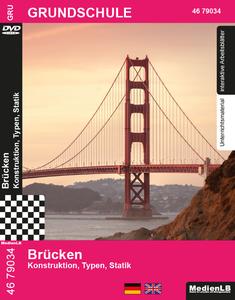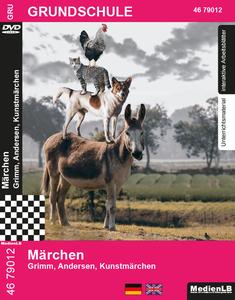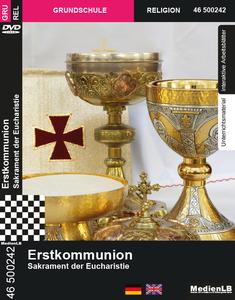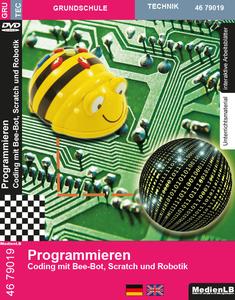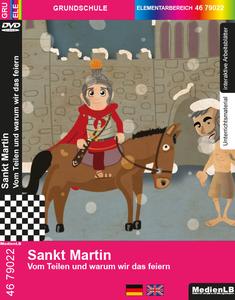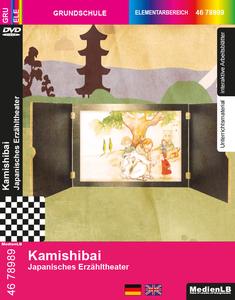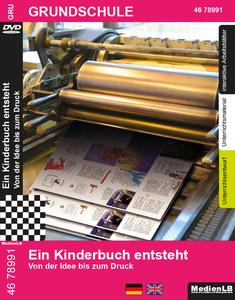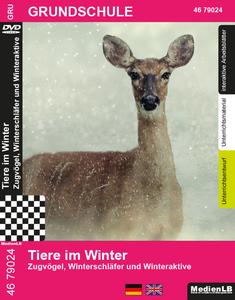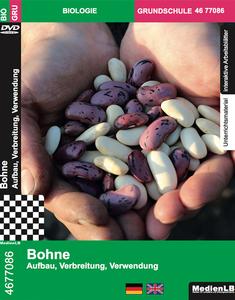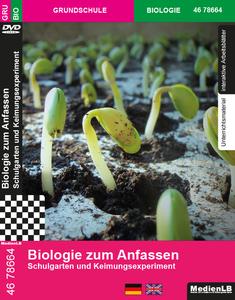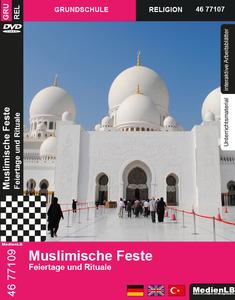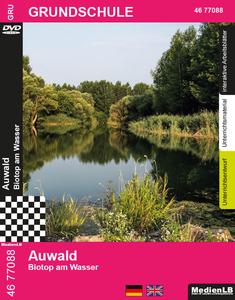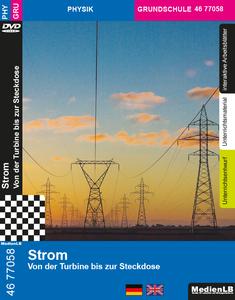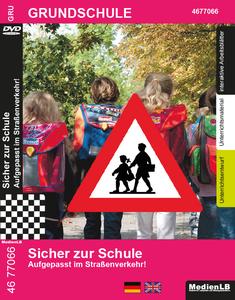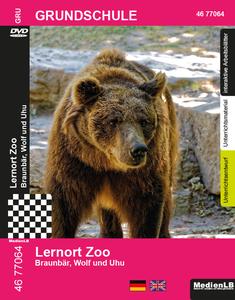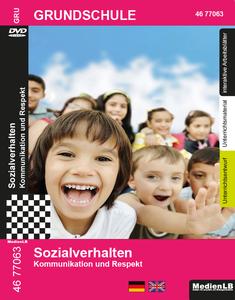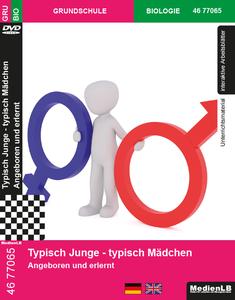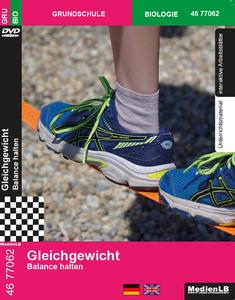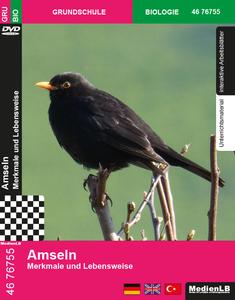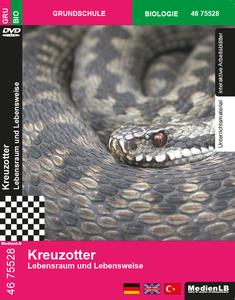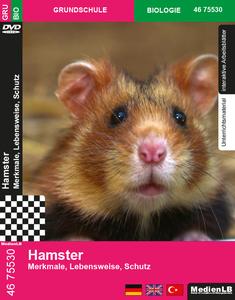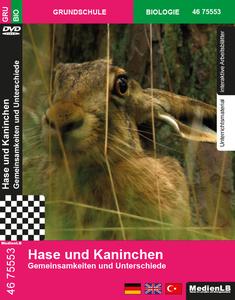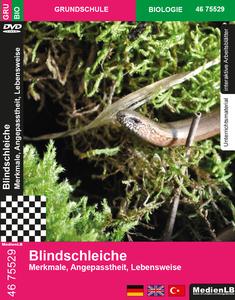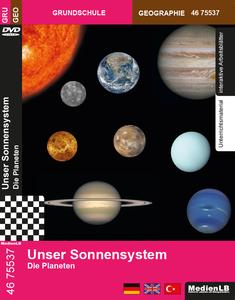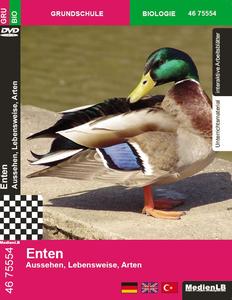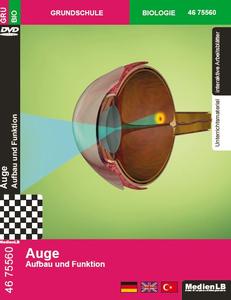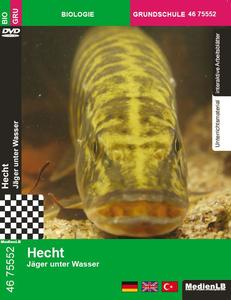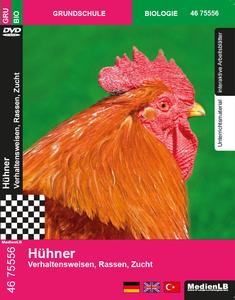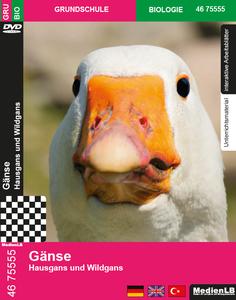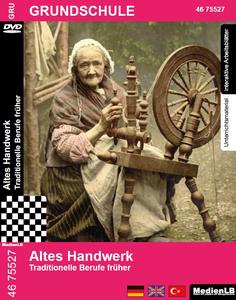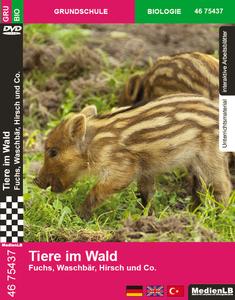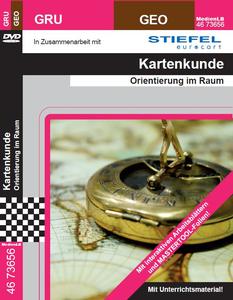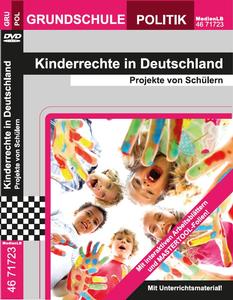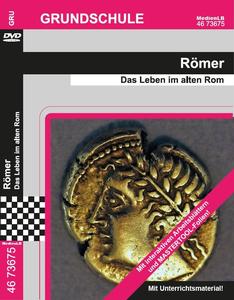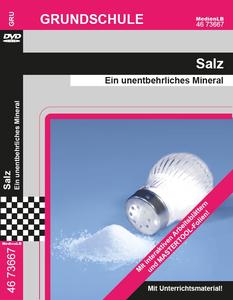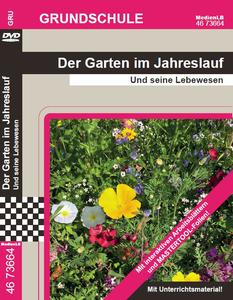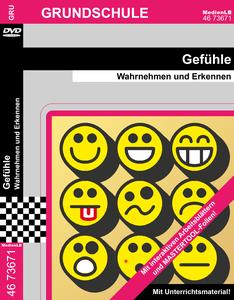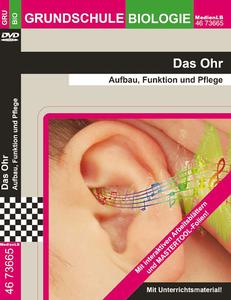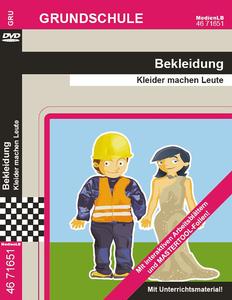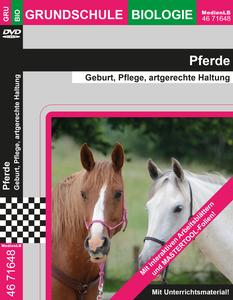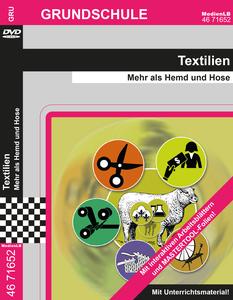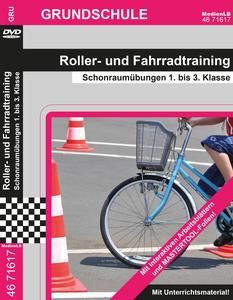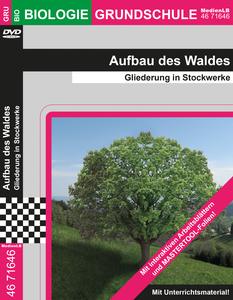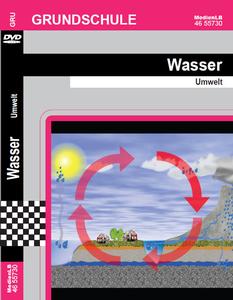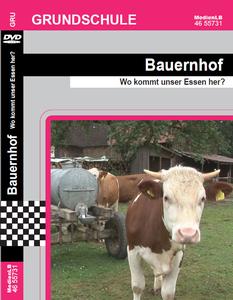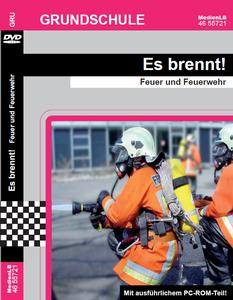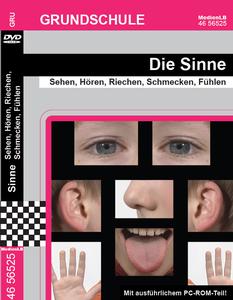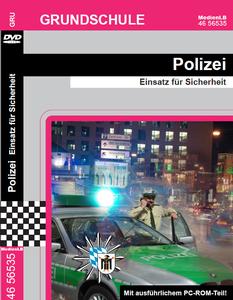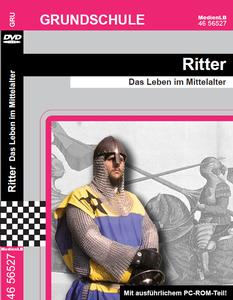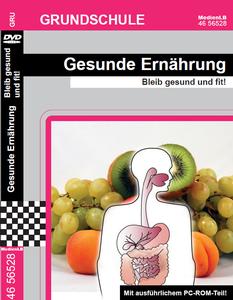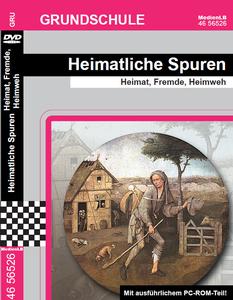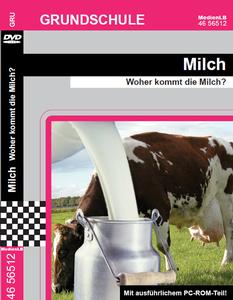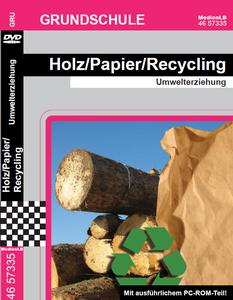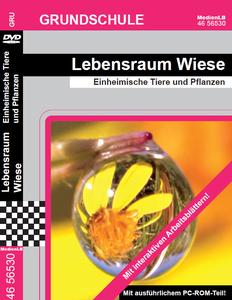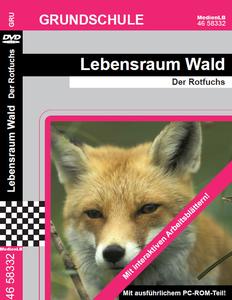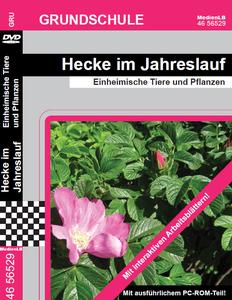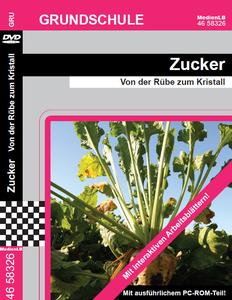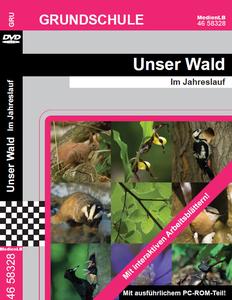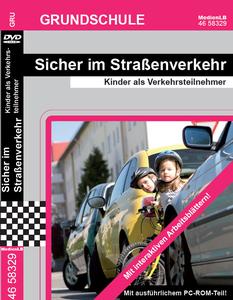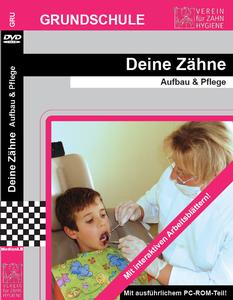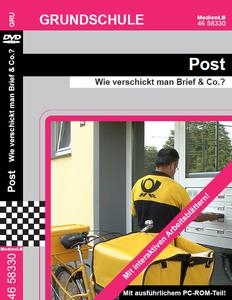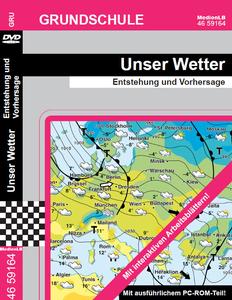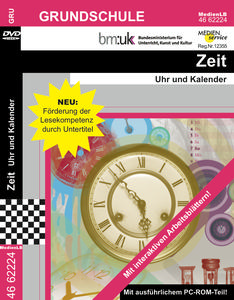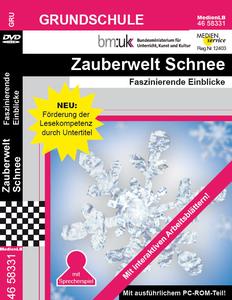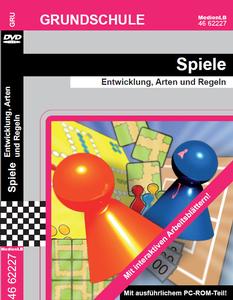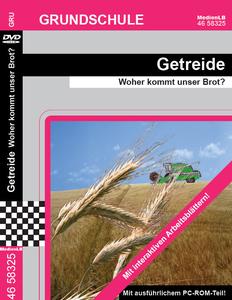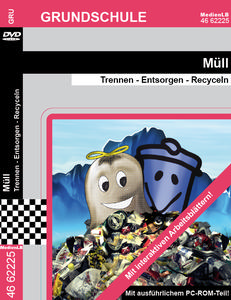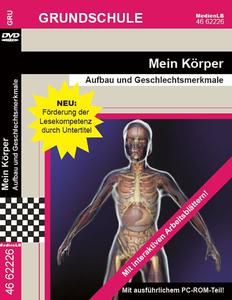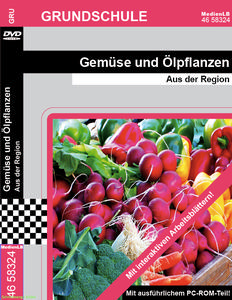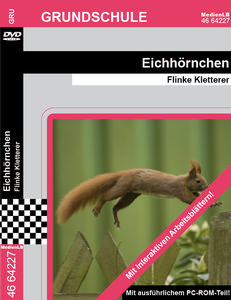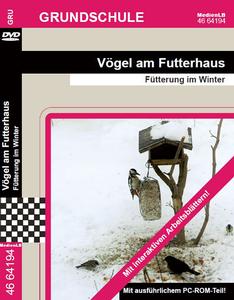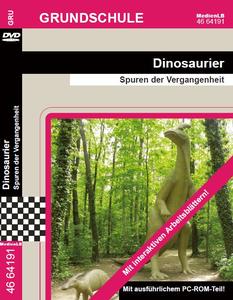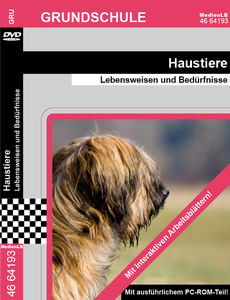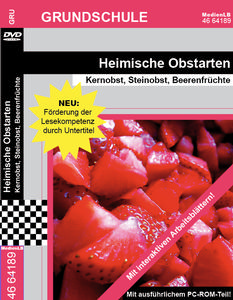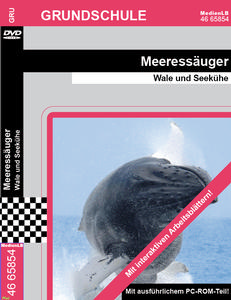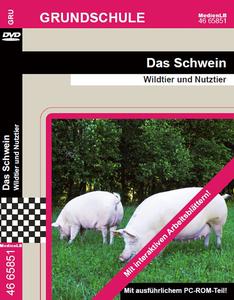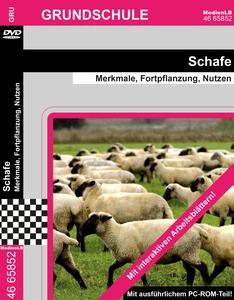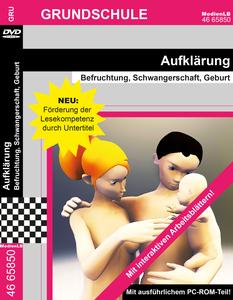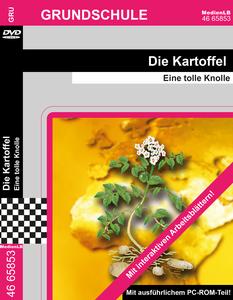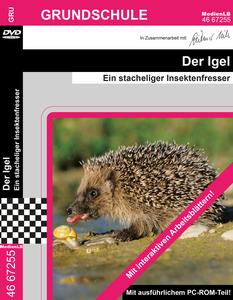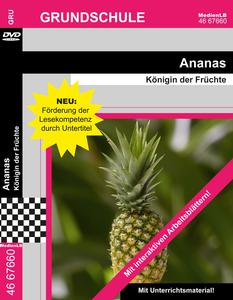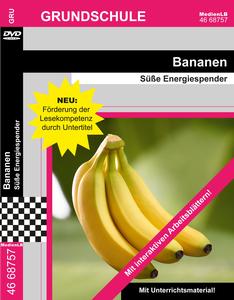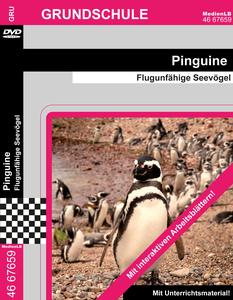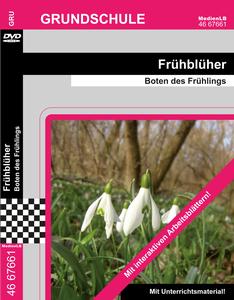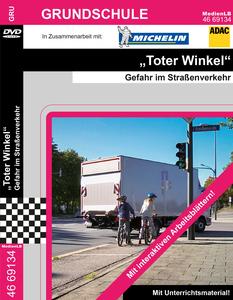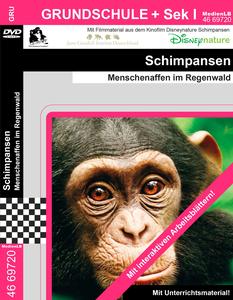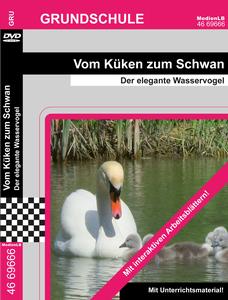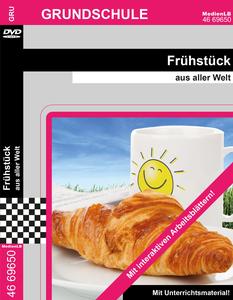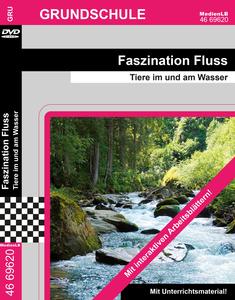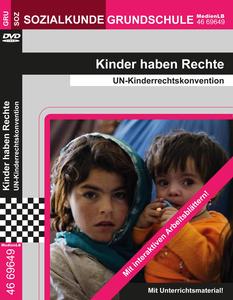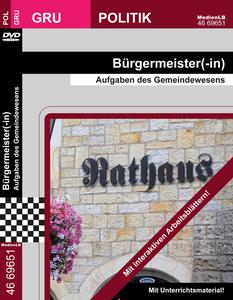-
Save energy
Heat, electricity
The extraction, generation and consumption of energy is a multi-faceted issue.
More about the DVD -
Continents
A Journey around the World
Continents are continuous expanses of land that are clearly separated from each other by oceans.
More about the DVD -
Healthy Diet
Carbohydrates, Proteins, Vitamins
For a healthy, balanced and vitamin-rich diet it is essential to know what basic ingredients are contained in our food. Let us take a look at the carbohydrates first. These are contained in bread but also in pasta, rice, potatoes and also in fruit such as bananas.
More about the DVD -
Intolerances
Lactose, Gluten, Fructose
We humans are so-called “omnivores“, that means we eat everything. We are not restricted in our diet. We tolerate meat, fish and vegetables, cereals and dairy products. Everything agrees with us.
More about the DVD -
Catholic and Protestant Baptism
Common Features and Differences
As an important ritual of the Christian faith, baptism is closely connected with the traditional stories of the prophet John the Baptist, who is said to have lived in Jesus’ lifetime.
More about the DVD -
Recycling
separating, sorting, reusing
The best waste is the one that never arises in the first place or that can be avoided.
More about the DVD -
Domestic Cat
Breeds and Behaviour
Nobody has actually counted all of them but it is estimated that there are about 200 million domestic cats in the world.
More about the DVD -
Hydrological Cycle
Precipitation, Drinking Water, Sewage Plant
Water is the source of life because life on our Earth originated in, more precisely, under the water.
More about the DVD -
Crane
Lifting, Rotating, Moving
Even though all cranes are lifting equipment – type and appearance of a crane can be quite different.
More about the DVD -
Responsible Consumption
Effect of Packaging and Advertising
What do “consumption“ and “consume“ actually mean? This is what the child reporter Ferdinand wants to find out today. That much is for sure: often it has something to do with money.
More about the DVD -
Staatssymbole
Flag, Anthem, Coat of Arms
Currently There are 194 countries or states on our earth. Every state has its own state emblem, for example, a national flag. It is a symbol of the history of a country, of its situation or its culture.
More about the DVD -
Medieval Castle
Design, Function, Everyday Life, Fight
In the thousand years of the Middle Ages – approximately between the 6th and 16th centuries after Christ, there must have been 20,000 or maybe even more castles in the area covered today by Germany and Austria.
More about the DVD -
Cattle
Origin, Anatomy, Farming
Cattle have been of vital importance for humanity due to both their spread all over the world and presence throughout almost all of human history.
More about the DVD -
Media in Everyday Life
Television, Smartphone, Computer
Media are part of our everyday lives. Children already used media in the past, however, it was not called that back then.
More about the DVD -
The Wheel
Invention and Development
One of the inventions that have brought humanity forward is the wheel.
More about the DVD -
Bridges
Construction, Types, Statics
Bridges are structures designed to overcome obstacles. These obstacles may be of a natural kind, such as rivers or canyons, but also artificially built, for instance motorways or railway lines.
More about the DVD -
Fairy Tales
Grimm, Andersen, Literary Tales
Helga Josefa Sophie loves fairy tales. When she was little, her mother read her the ancient stories. Later her children and then her grandson Janik listened spellbound when she read from the fairy tale kingdom between reality and the magical world.
More about the DVD -
First Communion
Sacrament of the Eucharist
This is Annabelle with her family. It is a special day for her because she is celebrating her Holy First Communion today.
More about the DVD -
Programming
Coding with Bee-Bot, Scratch and Robotics
There are a lot of things in the world whose functioning and appearance were determined even before they are perceived or before they occur.
More about the DVD -
Saint Martin
Sharing and Why We Celebrate It
Every year on November 11, Saint Martin’s Day is celebrated. This church festival is also referred to as Saint Martin’s Feast.
More about the DVD -
Kamishibai
Japanese Narrating Theatre
We spend a large part of our lives telling stories. Stories we read, listen to, watch – or tell others ourselves.
More about the DVD -
The Making of a Children’s Book
From Idea to Print
Every year thousands of new books are published. You can get a notion of that vast number at the large book fairs in Frankfurt or Leipzig.
More about the DVD -
Animals in Winter
Migratory Birds, Hibernators and Winter-active Ones
It is winter. If you are dressed warmly in thick jackets, scarves, caps, gloves and lined boots, the cold does not bother you. For many animals, however, winter is a hard time. The reasons for this are low temperatures and the short food supply. The soil is frozen hard and partly covered in snow, the deciduous trees are bare. For all those who move outside now the struggle for survival begins. Our native wild animals defy these adverse conditions with very different survival strategies: some by being active, others hole up and others flee...
More about the DVD -
Bean
Structure, Distribution and Use
The word bean refers to both the seeds and the pods surrounding them and often even the whole bean plant. It is not easy to get an overview of the different types of bean plants. Their variety is due to, among other things, their different origins.
More about the DVD -
Hands-on Biology
School Garden and Germination Experiment
To perform the experiment with beans you need first of all the seeds, of course. Runner beans are well suited for it. Watch out!
More about the DVD -
Muslim Festivals
Holidays and Rituals
Meryem and Rabia at midday prayer with their parents.
More about the DVD -
Riparian Forest
Biotope on the Water
A large area of Europe is covered by woodland. In Germany alone, the number of trees is estimated at about 90 billion at present. That means, in Germany there are more than 1,000 trees per inhabitant.
More about the DVD -
Electricity
From Turbine to Socket
You realise how important and self-evident electricity has become in our everyday lives only when it is no longer there. At home, household appliances run by electricity would not work anymore. The refrigerator would not cool anymore, the heater would not heat anymore. No washing machine, no telephone, no television, no game consoles – and, of course, we would suddenly be plunged into darkness if the light went out. Even a flashlight would not help because it works with electricity as well even though this electricity does not come from the socket but from a battery. Without electricity we would actually be in the dark.
More about the DVD -
Safety on the Way to School
Beware of Road Traffic
You go to school to learn. But actually, learning starts earlier, namely on the way to school. When you set out from home on your way to school, you become a road user – just like all other pedestrians, cyclists, cars, lorries or buses. And all road users must take care that no accidents happen on the roads or pavements. As a road user you must be attentive and, if possible, always keep an overview of where you are standing, going or driving – and of what other road users are doing or maybe planning to do. You have to be careful and always take into consideration that perhaps another traffic participant is not being attentive. Thus you can avoid accidents. And eventually you must show consideration for other people using the road or pavement.
More about the DVD -
Zoo Learning
Brown Bear, Wolf and Eagle Owl
Seeing animals close up on a trip right in the middle of the city – this is possible on a visit to the zoo. There we can see many animals that cannot be found in the wild around here as a rule. From small to large, dangerous animals, harmless animals, and some you can stroke. Animals that attract attention through their outward appearance and those that are difficult to see in their environment.
More about the DVD -
Social Behaviour
Communication and Respect
Every child is unique and has talents and strengths it can use to advantage in a community, for example in a class community.
More about the DVD -
Typical Boy, Typical Girl
Innate and Acquired
QUOTE girl: "Lots of girls play with Barbie dolls." QUOTE boy: "Typical boys, that’s rather ... more football and more fighting ..."
More about the DVD -
Equilibrium
Maintaining a Balance
All things have weight. Some things are heavy. Others are light. Often you would like to strike a balance. What is light should get heavier and what is heavy should get lighter. When bodies, substances or conditions are balanced, we call it equilibrium.
More about the DVD -
Blackbirds
Features and Behaviour
The blackbird is one of our most common and best-known songbirds. The nice thing about the blackbird is that it cannot be confused with many other bird species.
More about the DVD -
Common European Adder
Habitat and Mode of Life
The common (European) adder is extremely wide-spread across the globe. The common adder owes its German name “Kreuzotter” (“cross adder”) to the broad zigzagged band on its back, or so-called “cross” in German.
More about the DVD -
Hamsters
Characteristics, Mode of Life, Protection
Hamsters are small rodents that have four sharp incisors. They are related to mice. With their small beady eyes and the constantly sniffing nose the crepuscular and nocturnal animals look cute.
More about the DVD -
Hare and Rabbit
Similarities and Differences
How do we distinguish between a hare and a rabbit? At first sight, both look confusingly alike for both have long ears and a stumpy tail.
More about the DVD -
Slow Worm
Characteristics, Adjustment, Behaviour
The slow worm is a small, completely harmless lizard, which – contrary to its German name “Blindschleiche”– is perfectly able to see and is often mistaken for a snake because it has no legs and an elongated body.
More about the DVD -
Our Solar System
Planets
Looking up at the cloudless night sky is something special. It is a spectacle that we are offered free of charge every clear night.
More about the DVD -
Ducks
Appearance, Behaviours, Species
Ducks are our best-known water birds. You can watch them on almost any large body of water. Although we come across them frequently, most of us know very little about the lives of ducks. But it is worth our while to look at them more closely.
More about the DVD -
Eye
Structure and Function
The eye is one of our most important sense organs. It provides direct access to the world. We perceive most information we are flooded with and which has an impact on us via our visual sense.
More about the DVD -
Pike
Underwater Predator
The pike is one of our largest native predatory fish. Its mouth is studded with razor-sharp teeth. Its elongated streamlined body makes it as fast as an arrow. The pike is the perfect underwater hunter. At the same time, however, it is prey to a lot of other animals and a popular food fish.
More about the DVD -
Chickens
Behaviour, Races and Breeding
In the story of “Max and Moritz“it says: To most people who have leisure Raising poultry gives great pleasure;
More about the DVD -
Geese
Domestic Geese and Wild Geese
“They’re gabbling like geese”, “she’s such a stupid goose” or “silly goose”– those are commonly known sayings. But geese are neither stupid nor chatty, gabbling is their language.
More about the DVD -
Old Crafts
Traditional Trades in Former Times
Crafts have existed for centuries. Some old craftsmen’s trades have almost disappeared over time. In order to keep up the traditions of the crafts, old handicrafts are presented at traditional festivals or on markets.
More about the DVD -
Animals in the Forest
Fox, Raccoon, Deer and Others
The forest is home to many animals.
More about the DVD -
Doctrine of Maps
Spatial Orientation
..... But how does a compass work? The answer is: by magnetic force. When you place a magnet amidst metal filings, you can see how these filings are pulled to the magnet. And when you take a closer look, you can see that the filings arrange themselves in specific directions at the magnet. This way, you can see where the field lines of the magnet run. The horseshoe magnet has a north pole and a south pole like the Earth. The direction of the cuttings tells you where the field lines along these poles are.
More about the DVD -
Children’s Rights in Germany
Projects of Pupils
In Germany there are many groups of children who fight for children's rights to be respected. Again and again, these groups organise activities where they point out children's rights. The groups are supported by UNICEF, the United Nations Children’s Fund..
More about the DVD -
Romans
Life in Ancient Rome
Augsburg, Cologne, Trier – perhaps you have already heard about these cities. But did you also know that all these cities were built by the Romans?
More about the DVD -
Salt
An Indispensable Mineral
The soup has no taste at all today – why? Ah – there is no salt in the soup! It is the salt that gives real flavour to the food.
More about the DVD -
The Garden throughout the Year
And Its Creatures
You surely know a few gardens, maybe you even have one yourself. Have you ever taken a closer look at it? A garden is not only a great place for playing – you can also cultivate and harvest fruits or vegetables there, and when you take a good look, you will see that it is brimming with life.
More about the DVD -
Feelings
Perception and Identification
Feelings belong to humans like their noses and ears or like eating and breathing. There are a lot of different feelings: some of them feel right and great, others are less good and can cause problems.
More about the DVD -
The Ear
Structure, Function and Care
Large or small, narrow or broad, round or angular. Our ears may be of a variety of shapes.
More about the DVD -
Clothing
"Clothes Make the Man"
Besides food and shelter, clothing is also one of the basic needs of human beings. Suitable clothing protects against wet, cold or warm conditions, and it also protects us from injuries or burns from the sun.
More about the DVD -
Horses
Birth, Care and Species - appropriate
They are the epitome of power and elegance. Man domesticated them long after dog and cat, they provided meat, were strong agricultural helpers pulling ploughs and other implements.
More about the DVD -
Textiles
More than Shirt and Trousers
When we hear the word “textiles“, we automatically think of things we put on – such as shirts, trousers, pullovers, caps or other things to wear.
More about the DVD -
Scooter and Bicycle Training
Exercises in a Safe Environment for the First to Third Schoo
Scooters and bicycles are very popular with all levels of the population, and they are part of our everyday life. Due to the increasing volume of traffic, scooter and bicycle training at school is of great importance.
More about the DVD -
Structure of the Forest
Division into Layers
Forests are more than an accumulation of trees. The individual tree is more than a valuable source of wood. From its roots to its crown, it offers habitats to a variety of the most different creatures.
More about the DVD -
Water
The Environment
This DVD offers an insight into the correlation between life and water. In simple terms that are easily understandable to primary school pupils, the film outlines the significance of water for the lives of humans, animals and plants.
More about the DVD -
The Farm
Where does our Food Come from?
This DVD offers some insight into the life on a farm today. In a way easily understandable for primary school pupils, the film shows with simple and tranquil pictures the daily work in an agricultural business.
More about the DVD -
On Fire!
Fire and the Fire Brigade
This DVD provides information on the history of fires and the fire brigade. The firefighters’ job is vividly illustrated, including their tasks and equipment. The topic of placing emergency calls plays a major part on this DVD.
More about the DVD -
The Senses
Sight, Hearing, Smell, Taste, Touch
This DVD shows how we humans use our five senses to get in touch with our environment. The primary school pupils learn in an easily understandable way about the specifics, the use and the sensitiveness of each sensory organ and receive methodically organised information on their structure, function and protection.
More about the DVD -
Police
In Action for Safety
This DVD provides comprehensive information on the diffe- rent areas of police activity. The responsible job of police officers as well as their every- day duties are clearly described and shown in a way that is understandable to primary school pupils.
More about the DVD -
Knights
Life in the Middle Ages
This DVD offers an insight into the life of knights in the 13th and 14th century of the Middle Ages. The film describes events in the lives of knights as well as life in the castle in a way that is clear and easy to understand for young pupils.
More about the DVD -
Healthy Diet
Stay Healthy and Fit!
No matter whether we write, read, sleep or move, we always use up energy. Imagine your body is like a car. It needs petrol to be able to move.
More about the DVD -
Home
Home, Foreign Parts, Home Sickness
Everyone of us has a home. We primarily associate home with our families, which give us a sense of comfort and security. We have our home town where we were born, but what exactly is home? According to the encyclopaedia, home means all the conditions under which someone grows up.
More about the DVD -
Milk
Where does Milk Come from?
Milk is one of the oldest and, at the same time, most natural foods we know. This DVD provides comprehensive information on cow’s milk.
More about the DVD -
Wood/Paper/Recycling
Environmental Education
The DVD “Wood/Paper/Recycling” provides information on the treatment and processing of wood. The production of paper, an everyday item in our lives, as well as the recycling process are explained to the primary school pupils in a simplified way.
More about the DVD -
The Meadow as a Biotope
Indigenous Animals and Plants
This DVD offers an insight into the plants and animals typically found in the meadow biotope. In an easily comprehensible way, primary school pupils experience a small, exciting world where various kinds of animals and plants co-exist.
More about the DVD -
The Forest as a Biotope
The Red Fox
The forest with its flora and fauna as a part of the natural environment our children grow up in is an important topic in general education at primary schools.
More about the DVD -
The Hedge in the Course of a Year
Indigenous Animals and plant
This DVD offers clearly structured information, in particular covering the following topics: Firstly, the diversity and type as well as the different tasks of a hedge are described. Vivid pictures illustrate the difference between low hedges, hedges of middle height and high hedges.
More about the DVD -
Sugar
From Beet to Crystal
The “Sugar” DVD covers the sugar beet and sugar produc- tion in detail. Simple and clear pieces of information allow the children to easily understand the individual stages from sowing the seeds to processing the beets in the sugar factory.
More about the DVD -
The Forest
Throughout the Year
As a part of the natural landscape in which our children grow up, the forest with its flora and fauna is an important subject in primary school teaching.
More about the DVD -
Safety in Road Traffic
Children as Traffic Participants
This DVD encourages children as young traffic participants to be considerate in road traffic to ensure safety and show social responsibility.
More about the DVD -
Your Teeth
Structure and Care
This DVD demonstrates that a regular and thorough brushing of your teeth is the foremost condition for their lifelong health. At the same time, pupils learn that food that doesn‘t damage their teeth is decisive, too, in keeping them healthy.
More about the DVD -
Postal Service
How Are Letters and Similar Postal Article
The postal service as an organisation for the delivery of news and retail goods through letters, postcards, parcels and packages is considered a part of the pupils‘ life experience and thus dealt with at primary school.
More about the DVD -
Our Weather
Formation and Forecast
In everyday life we are confronted with this topic on a daily basis. It is part of our lives. The weather determines our daily routine more than we tend to think. Children, in particular, have a lot of questions on the subject. How does the weather form?
More about the DVD -
Our Money
Calculating with Euros and Cents
„Money makes the world go round.“ Today this proverb is more topical than ever and perfectly describes our dependence on the currency of money. This DVD is intended to contribute to an understanding of the phenomenon of money.
More about the DVD -
Time
Clock and Calendar
Time governs our everyday life. We cannot touch, hear or see it but it is always there. One century ago, Albert Einstein proved that time is relative.
More about the DVD -
Magical World of Snow
Fascinating Insights
With descriptive real and trick sequences, the film explains how snow forms and what different kinds of snow crystals there are. We observe a snow researcher at work and watch growing snow crystals under a microscope in spectacular close-ups. The film also answers the questions why snow looks white to us or crunches; it shows sledge dogs in action and explains ingenious survival strategies of animals in winter.
More about the DVD -
Games
Development, Types and Rules
There are many different types of games. Board games, guessing games, waiting games, games of skill, sports games or computer games, too. We play because it is fun, we like activities with others and because we wish to pass our time in a pleasant way. The film gives an overview of the different types of games. It illustrates what you need to play parlour games and how a game is created.
More about the DVD -
Grain
Where Does Our Bread Come from?
The DVD offers spectacular insights into rural forms of work of former times and of today and into the work of a baker, so that pupils can easily comprehend individual work steps, too. In addition, the children gather information on the characteristics and use of the most important types of grains: rye, wheat, barley, oats and maize.
More about the DVD -
Waste
Separation - Disposal - Recycling
The content of the film "Waste" is based on the specific field of experience of children – how household waste is produced and disposed of. In a vivid way, the film makes the children acquainted with the various forms of waste, how they are disposed of and how many reusable materials are contained in our household waste.
More about the DVD -
My Body
Structure and Sexual Characteristics
All human beings in the whole world have the same physique. However, we differ from each other in sex, height and weight as well as in skin and hair colour. The way we move, too, is different with each individual person.
More about the DVD -
Vegetables and Oil Plants
Grown Locally
Throughout the whole year, shops offer us a varied assortment of different kinds of vegetables. But where do the vegetables come from? Originally wild-growing, vegetables are crop plants today. They are sown or planted, cultivated and harvested by humans.
More about the DVD -
Squirrels
Agile Climbers
The DVD presents the squirrel in its natural habitat, the forest. Fantastic nature scenes help primary school children to get to know the behaviour of the squirrel in a way that is easy to understand, thus providing them with an important insight into its needs. Its characteristic body structure that makes it an agile acrobat is pointed out and explained.
More about the DVD -
Birds at the Bird Feeder
Feeding in Winter
Winter has come. The trees are bare, a thick layer of snow covers the ground. Life seems to have frozen.
More about the DVD -
Dinosaurs
Traces of the Past
They are gigantic, fascinating and have offered material for the media time and again – dinosaurs. Year after year, our knowledge about these animal increases. In spite of that, opinions persist that all dinosaurs were bloodthirsty, cruel carnivores. The film at hand clears up these misconceptions.
More about the DVD -
Domestic Animals
Behaviour and Needs
As different as the various breeds and races of pets and domestic animals are, as different are our ways of dealing with them. Some people have purchased their pet for joy and recreation, others take advantage of the specific capabilities of their domestic animals.
More about the DVD -
Domestic Fruit Species
Aggregate Fruit, Drupe, Berry Fruit
The film deals extensively with the topic "Fruit". In a simple and comprehensible manner but with professional accuracy, it tells the primary school children about processes in nature. They learn how fruits form and develop on fruit trees and bushes. Information on domestic fruit farming is provided and they get to know the importance of fruit for a healthy diet.
More about the DVD -
Marine Mammals
Whales and Sea Cows
The oceans are the home of whales, which look like fish but, in fact, are mammals like we humans and breathe with their lungs. The film shows the peculiarities of whales, which are divided into two main groups: baleen whales and toothed whales.
More about the DVD -
Pig
Wild Animal and Farm Animal
Pigs are considered good luck symbols and are an important food source. They are true olfactory artists and their auditory sense is excellently developed. Their vision, however, is not good at all. The film presents wild pigs and farm pigs and deals with the topics of factory farming and organic farming.
More about the DVD -
Sheep
Characteristics, Reproduction, Utility
The sheep, one of the oldest livestock animals of mankind, has not only supplied us with wool, meat, pelts and milk but has also helped us conserve our landscape. There are between 500 and 600 different varieties. In Germany alone, there are more than 40 breeds.
More about the DVD -
Sex Education
Fertilisation, Pregnancy, Birth
The creation of a new human being is a miracle. Children are interested in where they come from. They want to know how a baby gets into the mother’s womb, how it develops inside and is finally born. The film answers questions about fertilisation, pregnancy and birth.
More about the DVD -
The Potato
A Terrific Tuber
The potato is one of the most important food staples of the world. Together with rice, maize, wheat, barley, soy and sugar cane it is one of the seven most important foods on earth. Originally it came from the Andes in South America. The Spaniards brought it to Europe and then to all other continents.
More about the DVD -
The Hedgehog
A Spiny Insectivore
It carries on its back up to 8000 spines although it is no more than 30 centimetres long. In spite of that it can assert itself very well against its enemies. Because this insectivore can roll up into a ball. Although the hedgehog is a wild animal, it likes to live near humans today.
More about the DVD -
Pineapple
Queen of Fruits
Fruit is a multi-faceted gift of nature. Almost no other food is available to us in such a variety. It tastes good, is healthy and can mostly be eaten raw. However, it should be well washed before or even peeled, depending on the variety. The term “fruit” is understood to mean fruits from trees and shrubs.
More about the DVD -
Banana
Sweet Energy Booster
Bananas can be bought at any supermarket today. We eat them raw or make them into cakes, shakes and ice-cream. But where do bananas come from? How have they got to the supermarket? On plantations in Costa Rica bananas are cultivated in an elaborate process. It is most important that bananas always have enough heat, sun and water.
More about the DVD -
Penguins
Flightless Seabirds
When we hear the word “penguin“, we immediately think of animals living in the cold and ice world of Antarctica near the South Pole. However, this is not the whole truth.
More about the DVD -
Early Flowering Plants
Harbingers of Spring
During the first warmer days in late winter, the harbingers of spring show that new life is stirring. With great biodiversity and beauty the early flowering plants herald the change of season. In an easily comprehensible manner and often with stunning time-lapse images the film makes children aware of the connection existing between the sprouting of the early flowering plants so soon in the year and their extraordinarily rapid growth.
More about the DVD -
Dead Angle
Traffic Dangers
Not only lorries have a dead angle. Other big vehicles such as buses or motor homes, even perfectly normal cars have a dead angle, that means an area where a driver might overlook a cyclist or pedestrian when turning corners. New technology is meant to help prevent accidents between cyclists and lorries. For example, sensors are often attached to lorries nowadays.
More about the DVD -
Chimpanzees
Great Apes in the Rainforest
They are many children’s favourites. And expert gymnasts in their realm. Dexterously they make their way hand over hand from branch to branch or skilfully climb the long ropes.
More about the DVD -
From Hatchling to Swan
The Elegant Water Bird
This native water bird glides majestically across the water. It has a graceful curved neck.
More about the DVD -
Breakfast
From All over the World
Breakfasting – this morning ritual exists in almost every country, every culture and every century. However, food, time, process and duration vary from country to country, family to family, person to person.
More about the DVD -
Fascination River
Animals in and around the River
Brooks and rivers cross our country. They burst their banks in their natural course and form many habitats for plants and animals. Let us start on a journey of discovery together and experience nature in all its diversity along an intact river system with running and stagnant waters.
More about the DVD -
Children Have Rights
UN Convention on the Rights of the Child
Every human being has rights. Children have children’s rights. Since 1946 the UN – the United Nations – has been working to safeguard these rights. On 20th November 1989 it was adopted: the UN Convention on the Rights of the Child.
More about the DVD -
Mayor(ess)
Tasks of the Municipality
Gauting is a municipality southwest of the city of Munich in Bavaria. About 20,000 people live in the municipality. But who actually ensures that such a system works?
More about the DVD
